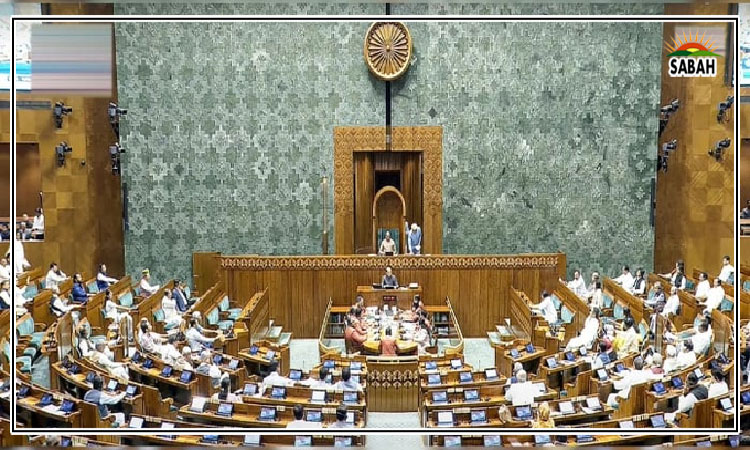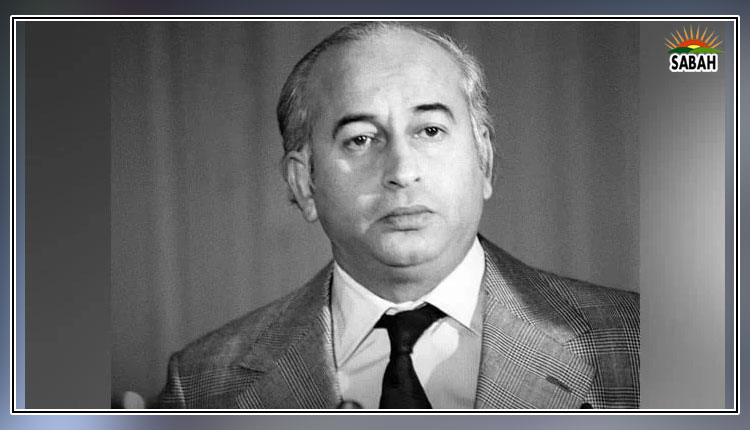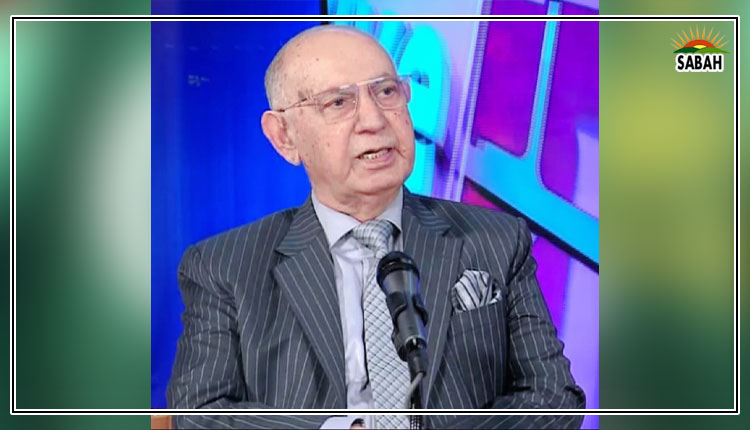How to appoint a judge to the SC…Salar Rashid
If you wander far enough into Shenandoah Valley, you might find yourself in an orchard brimming with plum trees, their bare branches twisting and writhing in odd angles.
These aberrant existences have fought and lost against nature itself, the cruel touch of wind compelling them to submit and grow in unnatural ways. Scientists have a name for this phenomenon: thigmomorphogenesis, the tendency of plants to alter their growth patterns in response to mechanical forces.
Sixteen years ago, our judiciary underwent their own version of thigmomorphogenesis. The political tempest created by Musharrafs suspension of former CJ Iftikhar Chaudhary, and the Lawyers Movement that followed, injected a unique brand of tribalism into the legal fraternity. It became near-universally accepted that the interests of the judiciary and of various bar associations were to be guarded jealously, even if said interests undermined the administration of justice.
Our superior courts are the victims of a vicious siege mentality, wherein the existential threats to their interests come from without, not from within. More specifically, the process for judicial appointments to the Supreme Court is a warped, reactionary byproduct of executive overreach. The current process doesnt merely frustrate the objective of elevating deserving individuals to the SC but undermines the very credibility of the Court, and therefore, the judicial orders that flow from it. No number of My Lord(s) uttered in court, no appending of Honourable before ones name, can possibly erase the stain of partisanship from Our Lordships robes.
Some of Pakistans sharpest legal minds have offered their thoughts on how the process for judicial appointments can be reformed. While perspectives differ, there is broad consensus on two issues: (a) the process is inadequate as it currently stands, and (b) there is a need to structure the JCPs discretionary powers.
The debate has largely been divided into two camps. For clarity, let us refer to one camp as that of the proponents of the seniority rule, and the other as that of those in favour of elevation-by-merit. The former proposes that the senior-most nominee should be selected for elevation, while the latter proposes that members of the JCP should evaluate whether the nominees deserve elevation on individual merit. This bifurcation, at face value, seems to suggest that those belonging to the former camp hold that seniority is a suitable metric to determine elevation. In truth, even the more ardent supporters of the seniority rule accept that seniority is only a desirable determinative tip in the absence of a transparent, structured, quantifiable process.
In view of the upcoming vacancy and the controversy SC appointments have attracted historically, it seems prudent to ask: what can be done to improve the process of judicial appointments?
I submit that four key elements must be reformed: (a) the nomination process; (b) the composition of the JCP (c) the unwritten rules; and (d) the factors used as proxies for merit and the weightage given to them. Lets tackle the big one right out of the gate.
As it currently stands, all individuals to be considered for elevation are nominated by the CJP irrespective of who eventually ends up being elevated, all of them have the blessing of the CJP. It is this rule that represents, by far, the greatest hurdle in ensuring the legitimacy of judicial appointments.
Nothing in the constitution disallows each member of the JCP from nominating candidates on their own, and for good reason if we are to accept that the members of the JCP can be trusted to vote on the candidates that appear before them, we should extend that trust to the nomination process too. Each member of the JCP should nominate a candidate, and if said nomination is seconded by another member, the nominee should qualify for consideration.
Though this will undoubtedly serve to make the process more complicated, that isnt a negative. The friction incidental to such a system will limit the chances of only the like-minded being considered, making the system more reliant on the collective wisdom of the JCP. Frankly, the process should be complicated. A justice of the SC wields immense power: developing jurisprudence that echoes in a hundred courtrooms, present and future. Their judgments have the potential to fundamentally alter the way over two hundred million of our countrymen lead their lives. To make their selection easy would be an act of injustice itself.
Next, consider the composition of the JCP. At the time of writing, the JCP consists of the chief justice, four senior-most members of the SC, a former justice of the SC, the federal law minister, the attorney general of Pakistan, and a representative of the Pakistan Bar Council. If youre looking for a common denominator for all of them, beyond that they all belong to the legal fraternity, it is that they are men. From the highest courts of the land to the masses of lawyers pleading before the lower courts, there is a dearth of diversity.
Consider. Beyond the honorifics and pristine robes, judges are still human, with human limitations and human idiosyncrasies. When they decide cases, they not only interpret the law but subconsciously juxtapose the facts of the case against their lived experience. Research has long indicated that diversity on the bench the inclusion of perspectives unique to women and minorities positively impacts decision-making and bolsters public faith in the judiciary.
If we accept the argument that we need a diverse range of perspectives on the SC to administer justice to all citizens of Pakistan, it isnt too difficult to extend that understanding to the need to reform the composition of the JCP as the body that elevates the very individuals administering justice in the Supreme Court. For example, the JCP might reserve seats for a female or minority member of the Supreme Court, representative of the SCBA, and eminent academic in the field of law. That said, such changes will fail to realize their objective until the overarching issue of homogeneity in the legal fraternity is rectified.
This brings me to my next point. The process for judicial appointments has many implicit truths to it that need to be formalized or done away with in the interests of transparency and openness. Although there is no formal rule stipulating provincial quotas in the SC, its de-facto existence can be seen in JCP deliberations – when Justice Faisal Arab retired, SHC judges were considered to replace him. To make matters more complicated, Justices Mazhar and Ayesha were compared with judges from their respective high courts, not with the total pool of nominees from all high courts.
Though there is a legitimate argument to be made about the need for provincial representation given that the SCs jurisdiction encompasses the nations territory as a whole, irrespective of which side the coin falls in this debate, for the JCPs deliberations to be credible, the unwritten rules that are arbitrarily adhered to or discarded must be settled and formalized.
Lastly, let us consider the elephant in the room. After all procedural niceties are implemented and followed, how do we structure the discretionary powers of the JCP?
There are two approaches to the problem. The first is that we allow members of the expanded JCP to consider a broader range of nominations, to vote as they see fit, with no specific consideration of proxies for merit necessary. The second is a complicated, but quantifiable and transparent, system.
Each nominee should be required to provide a written personal statement and must be interviewed by the JCP, with four additional categories upon which the nominees will be marked: experience; jurisprudential range and competence; fiscal rectitude, integrity, and independence; and diversity.
Experience, which is what seniority acts as a proxy for in any case, can simply be determined by the time spent practising before or being a member of the superior courts. For competence, the number of reported judgments authored, the ratio of judgments upheld versus overturned and the number of cited judgments are valid proxies. A nominees jurisprudential range can be determined by their reported judgments across fields of law. For determining fiscal rectitude and integrity, JCP members will individually consider the same set of information given to other members and grant marks as they see fit. Lastly, a set number of marks will be given to the nominee if they add to the gender or religious makeup of the SC.
Upon the completion of marking, each member will rank the nominees on an individual list from least to most deserving. Say that there are seven total nominees with the current JCP composition. The highest-ranked nominee on a members list will be given seven marks, the second-ranked six, and so on. If, for example, Nominee X was ranked highest on each JCP members list, they would have sixty-three marks in the end. In this manner, each member will evaluate the nominee for their own ranking, and all rankings will be added up to determine the most deserving.
Let me make myself clear. Though all models will have their flaws and naysayers, it is an inarguable fact that the current order will not, cannot, should not, hold. Our system is underpinned by the courts moral and persuasive authority if the JCPs self-detrimental procedures arent reformed, the Supreme Court will find itself bending once more. Only this time, it will be submitting to a political tempest of its own making.
Courtesy The News












